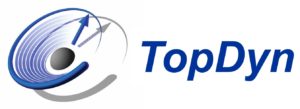

Seminar über die Physik der kondensierten Materie (SFB/TRR173 Spin+X und SFB/TR288 Kolloquium, TopDyn-Seminar)
July 12, 2017 at
1 p.m.
in
MEDIEN-Raum, Staudinger Weg 7, Raum 03
Univ-Prof. Dr. Jure Demsar
Univ.-Prof. Dr. Hans-Joachim Elmers
Univ.-Prof. Dr. Mathias Kläui
Univ.-Prof. Dr. Thomas Palberg
Spin Current Physics and Applications
Prof. Eiji Saitoh (Tohoku University, Sendai, Japan)
Generation and utilization of a flow of spin angular momentum of electrons in condensed matter, called spin current, are the key challenge of today’s nano-scale magnetism and spintronics. The discovery of the inverse spin Hall effect (ISHE) [1-3], the conversion of spin current into electric voltage via spin-orbit interaction, has allowed researchers to detect and utilize spin current directly, and, since then, many spin current driven effects have been discovered by exploiting the ISHE. Here, such newly discovered spin current effects will be outlined, including light-spin conversion [1,4], plasmon-spin conversion, sound-spin conversion, and heat-spin conversion [5-6], and their common mechanism and future possible application will be discussed. Among them, a typical conversion effect is the spin Seebeck effect (SSE) [5], spin current generation from a temperature gradient. SSE has attracted a great deal of interest since it may realize new type thermo-electric convertors which make full use of the characteristic feature of spins:
the non-reciprocal dynamics. This non-reciprocity allows a spin to rectify thermal fluctuation into unidirectional spin current via the spin pumping mechanism, which can be converted into electric power via the ISHE. Spins, working as a natural rectifier in magnets, may thus provide a versatile mechanism of energy conversion in condensed matter. I will show also that the rectification mechanism underlies various spin related phenomena which were found recently. At the end of my talk, spin current generation from mechanical motion of condensed matter will be discussed.
[1] E. Saitoh et al., Applied Physics Letters 88 (2006) 182509.
[2] J. Wunderlich et al., Physical Review Letters 94 (2005) 047204.
[3] T. Kimura et al., Physical Review Letters 98 (2007) 156601.
[4] K. Uchida et al., Nature communications 6 (2015) 5910.
[5] K. Uchida et al., Nature materials 9 (2010) 894.
[6] T. An et al., Nature materials 12 (2013) 549.